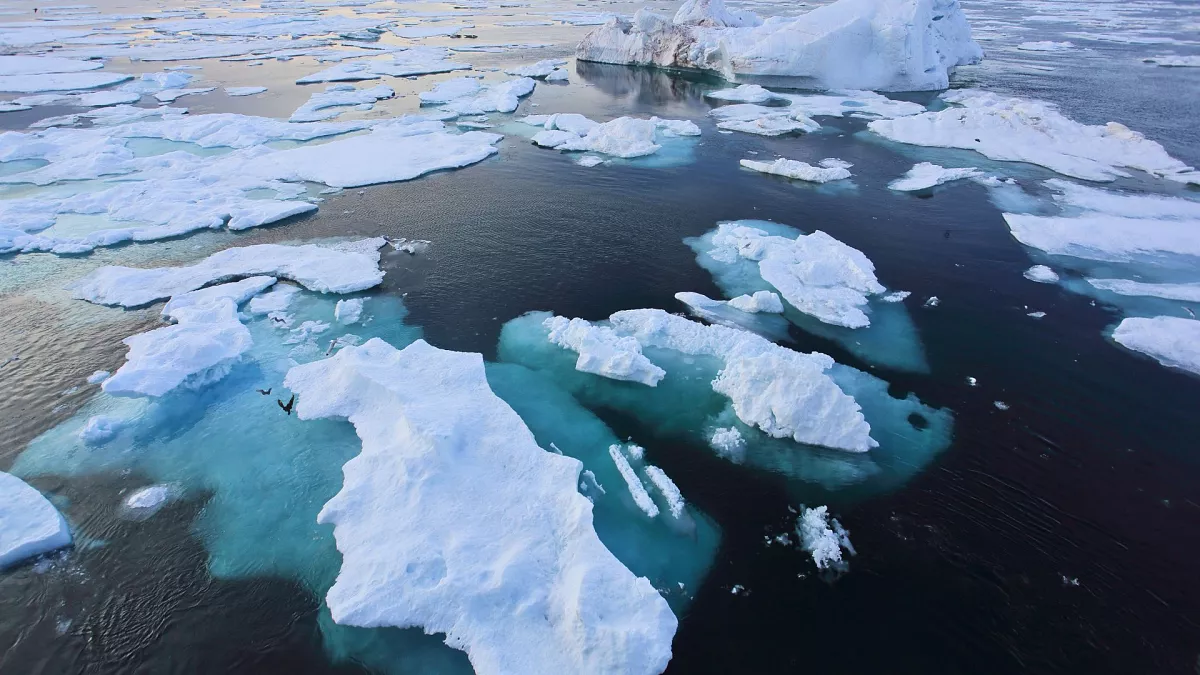Ice-Free Arctic by 2030 Predictions and Climate Change Impact
Table of Contents
Climate Change and the Shrinking Arctic Ice
The Arctic has long been recognized as one of the most sensitive regions to climate change, often referred to as the “canary in the coal mine” for the planet’s climate system. Over the past few decades, summer sea ice levels in the Arctic have been in rapid decline, with 2022 hitting one of the lowest levels on record. According to recent research, scientists now predict that the Arctic may experience ice-free summers as early as the 2030s, even in optimistic emissions scenarios.
This radical shift isn’t just about melting ice—it has consequences ranging from rising global sea levels to disruptions in weather systems worldwide. The loss of reflective sea ice also amplifies global warming through a phenomenon known as the albedo effect.
The Impact of an Ice-Free Arctic by 2030
An Ice-Free Arctic by 2030 would represent unprecedented environmental, economic, and geopolitical changes. Here are some of the major consequences:
Environmental Consequences
The melting Arctic ice will directly threaten the survival of many species, including polar bears, seals, and indigenous populations that rely on ice for their traditional way of life. Furthermore, it will disrupt marine ecosystems, making some coastal areas more vulnerable to flooding and erosion. The Arctic is also home to carbon-rich permafrost, which could release massive amounts of greenhouse gases if it thaws.
Global Weather Patterns
Changing Arctic conditions are already affecting weather patterns across the globe. Scientists point to an increase in extreme weather events such as heatwaves, hurricanes, and erratic rainfall. Melted sea ice alters the jet stream, causing weather systems to stall longer than usual, exacerbating droughts and floods.
Economic and Geopolitical Considerations
The retreating ice could open up trade routes and make untapped resources like oil and natural gas more accessible. While this might seem like an economic boon in the short term, the environmental costs far outweigh the benefits. Moreover, increased activity in the Arctic could intensify geopolitical tensions between nations vying for control over newly accessible resources.
Human-Induced Climate Drivers
The accelerated loss of Arctic ice is largely driven by anthropogenic (human-caused) climate change. The burning of fossil fuels, deforestation, industrial agriculture, and other human activities release significant amounts of greenhouse gases into the atmosphere, trapping heat and warming the planet.
According to the Intergovernmental Panel on Climate Change (IPCC), global temperatures have already increased by approximately 1.1°C since pre-industrial times. If current trends continue, the Earth could warm by 2°C or more by mid-century—well beyond the thresholds needed to preserve the Arctic as we know it.
Solutions to Prevent the Ice-Free Milestone
While the outlook appears grim, there is still time to take decisive action. Experts agree that mitigating climate change requires a combination of individual and global efforts. Here’s what can be done:
Switching to Renewable Energy
Transitioning away from fossil fuels to cleaner energy sources like wind, solar, and hydroelectric power is essential. Governments and industries must prioritize investments in sustainable energy infrastructure to significantly reduce carbon emissions.
Carbon Capture and Storage
Technologies that capture and store greenhouse gases before they enter the atmosphere are gaining attention. When combined with reforestation and restoring natural ecosystems, carbon capture can help offset emissions at a meaningful scale.
Global Collaboration
Climate change is a global issue that demands international cooperation. Agreements like the Paris Accord aim to limit warming to below 1.5°C, but world leaders must strengthen their commitments to reducing emissions. Collaboration extends beyond nations to businesses, communities, and individuals, urging everyone to do their part.
Education and Advocacy
Increasing awareness about the environment and the risks of climate change can empower individuals to make informed lifestyle choices. Climate advocacy, led by organizations and grassroots movements, is critical in pushing governments and industries to take action.
Conclusion
The possibility of an Ice-Free Arctic by 2030 is a wake-up call for humanity. It highlights the urgent need to combat climate change and transition to a more sustainable way of living. While the challenges ahead are immense, there is also immense potential for innovation and collective action. The choices we make today will determine the world future generations inherit.
For more insights on global challenges and solutions, visit zexnews.com.
“`





